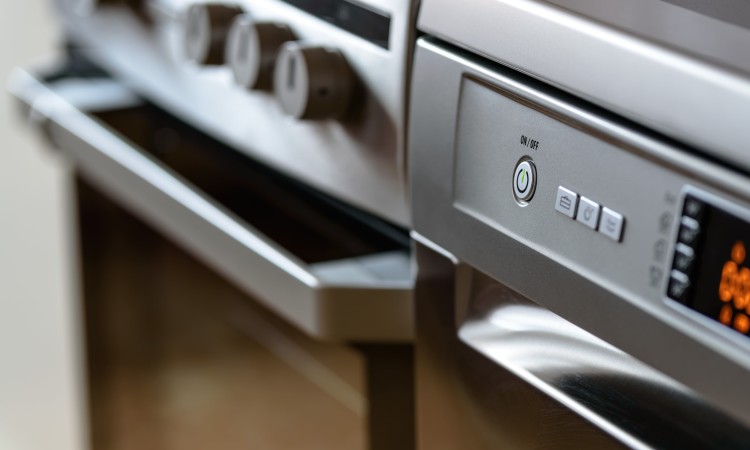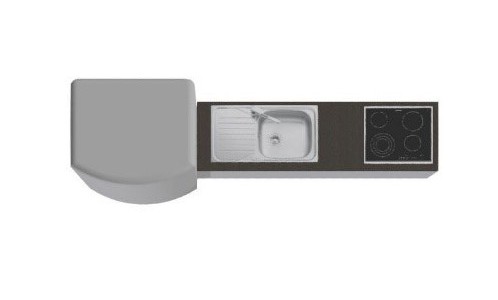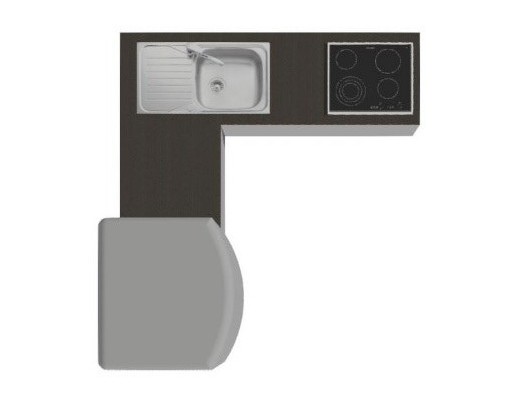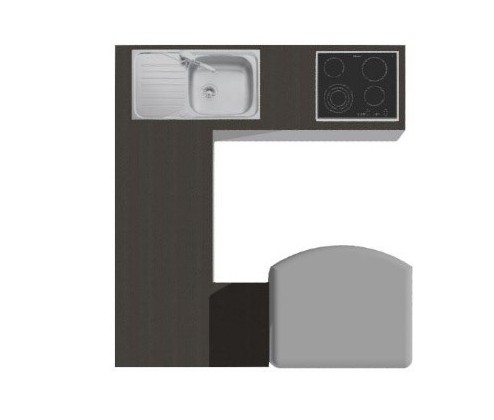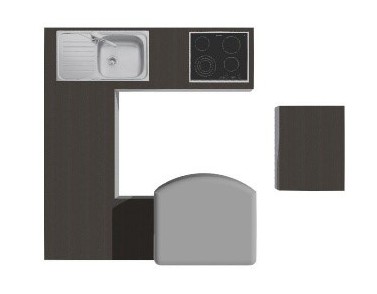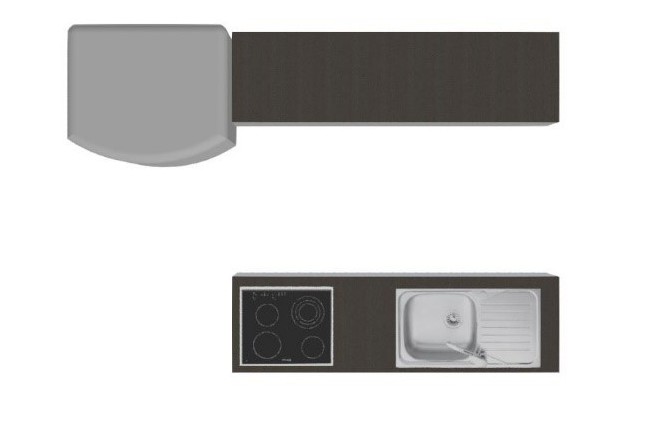Kitchen sizes and shapes. What’s important?
As we already discussed in our previous blog post – there are three main kitchen zones, that make a “work triangle”. The trick is to position these three points on your kitchen layout so that they are not too far from each other (this would make you walk backward and forwards more than you need to when carrying out a task) and not too close to each other (this makes for cramped working conditions). Ideally, the line between these three points should not exceed 6 metres in total. The ideal distance between the different working points is 90 cm.
The size of the kitchen may vary from a compact kitchen to a large kitchen, but none of them are better or worse. It really depends upon your family size, how often do you organize a friends gathering, etc.
The kitchen layout should be about convenience and be well thought out – true design.
Kitchen layout
In most cases, it’s the shape and size of your room that decides what kitchen layout you ultimately will choose. However, some kitchen layouts may suit your needs and living situation better than others. Here are five common kitchen layouts and their main characteristics.
- Single-line kitchen – Where space is scarce, a single-line kitchen in where the working triangle is reduced to a straight line, can be the most practical solution. It’s also pleasing to look at.
- Single-line with island – This single-line kitchen includes an island. An island provides plenty of storage as well as extra work surfaces, but it requires at least 120 cm of free space around to work well.
- L-shaped kitchen – The L-shaped kitchen is ideal when you want to add a small dining table or kitchen island. It’s also a good way to make the most out of a corner, as well as integrating the kitchen into a dining area.
- U-shaped kitchen – If you have a large room the U-shaped layout is ideal. It gives you maximum space and plenty of storage options – ensuring that everything is within easy reach. If the room is very large, it’s important to ensure that the points of the working triangle (see explanation above) are not too far from one another.
- Parallel kitchen – You don’t need to have a huge amount of space for this layout. It’s geared for food preparation and provides two great work and storage areas on opposite sides. In fact, it’s a favorite of many professional chefs.
Issues that may occur during the design process
Unfortunately, kitchen design is more difficult than it might look in the beginning. Some of them look plain, and others are downright difficult to design. The main kitchen design problems include but not limited to:
- Angular design, embedded kitchen, or kitchen in a niche.
- Non-rectangular walls
- Electricity cable and water pipe layout.
- Unusual embedded kitchen equipment placement
- Ventilation hob and ventilation channel design
- Symmetry/asymmetry and facade splitting problems
- Nonstandard unique design.
Because of these issues, it’s very important to have a flexible package for designing, which would meet all requirements and would be easy and convenient to use. Next time we’ll discuss different packages for kitchen design.
Next time we’ll discuss the software options for kitchen designers. Stay tuned!

